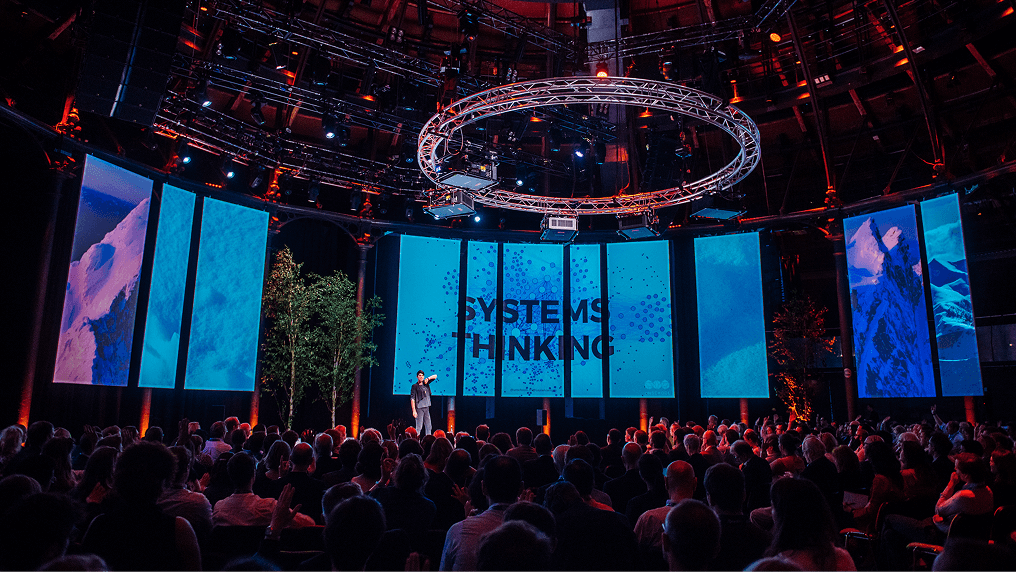Why data and measurement are key to a circular economy transition.
Measuring financial results, customer retention, productivity, and inventory are all commonplace, but these measurements alone are no longer enough to tell a business whether it will stand the test of time. To be successful, it is becoming increasingly clear that businesses need to consider their social and environmental impact — or else be caught out by changing legislation or left behind by customers. What once could be simply written off as a ‘negative externality’ now has financial implications and has to be central to business strategies. This means changing the way businesses see their role in society and, ultimately, transforming the economy.
Our current economic model is based on extraction and waste. It is linear — we take materials from the planet, make products from them, and eventually throw them away. This take-make-waste economic model fundamentally cannot work long term. It relies on the extraction and eventual disposal of finite materialsfinite materialsMaterials that are non-renewable on timescales relevant to the economy, i.e. not geological timescales. and — to satisfy an ever-growing demand for resources — encroachment into natural ecosystems, resulting in greenhouse gas emissions and staggering biodiversity loss.
Alternatively, an economic system based on the recirculation of resources and the regeneration of natural systems offers a way forward that can work in the long term. This model, known as the circular economycircular economyA systems solution framework that tackles global challenges like climate change, biodiversity loss, waste, and pollution. It is based on three principles, driven by design: eliminate waste and pollution, circulate products and materials (at their highest value), and regenerate nature., could help tackle the world’s biggest challenges, like climate change, biodiversity loss, waste, and pollution. The circular economy is underpinned by three principles, each driven by design: eliminate waste and pollution; keep products and materials in use; and regenerate natural systems.
Circular economy is gathering momentum and is being embraced across the public and private sectors around the world. For example, more than 50 global leaders, including CEOs of some of the world’s largest companies, policymakers, philanthropists, academics, and other influential individuals, signed a joint statement in June 2020 calling for a transition to a circular economy in response to the economic impact of the coronavirus pandemic. In the plastics sector, more than 1,000 organisations have united behind, and are working towards, a common vision of a circular economy for plastics.
As organisations begin to make strides in their efforts to transition away from a linear way of doing business and to implement real-world changes, clear and comparable metrics will be valuable for assessing their success and planning future actions.
Jarkko Havas, Insights and Analysis Lead at the Ellen MacArthur Foundation, explains: “Implementing changes can only be effective when we have a clear vision of a future state, an understanding of where we are now, and a view of how quickly we are moving between the two states. Measuring progress and tracking changes is an essential factor in the transition to a circular economy.”
Measuring the circular economy transition for businesses
To understand whether business activity is achieving the aims of a circular economy, business leaders need access to data that measures the circular economy performance of their business, alongside the more commonplace metrics used for assessing the business.
However, measuring circular economy performance is a relatively new area and this can lead to misinterpretation of circular economy, with the outcome being well-intentioned incremental tweaks to linear systems, rather than the adoption of truly circular business models. The concept of a circular economy, and what it means for businesses, has been interpreted in many ways. As a result, standardisation of the concepts behind circular economy and their inclusion into broader non-financial reporting standards are areas of ongoing work. Measuring circular economy performance also requires data on areas of a business that haven’t traditionally been measured, such as the circularity of water flows or physical assets.
Havas adds: “It is vital that we understand how to achieve a circular economy beyond the recirculation of materials. Upstream solutions such as product and service design are essential to eliminate waste before it happens. On an organisational level, we also need to ensure that the circular economy is a part of strategy, risk assessment, and organisational targets, to name a few.”
In order to measure circular economy performance, it is important to take stock of the concrete results of a company’s efforts to transition to a circular economy — to create a snapshot of the company’s current circularity, in terms of material flows and business models. However, it is also important to look at things that enable the transition to happen, such as senior leadership buy-in and necessary infrastructure — this gives an insight into companies’ circular economy potential.
As more businesses have employed circular economy models, a number of initiatives have been developed to measure circular economy performance. This includes the Circular Transition Indicators by the World Business Council for Sustainable Development and the Ellen MacArthur Foundation’s Circulytics tool, of which version 2.0 has recently been launched. Broader reporting frameworks, such as the Global Reporting Initiative have also started to embed concepts of the circular economy.
Anna Krotova, Global Reporting Initiative Senior Manager — Standards, says: “Since its last revision in 2016, we have updated the GRI Waste Standard to reflect the continued transition to the circular economy. This update will help thousands of GRI reporters look beyond operational waste, towards understanding how their activities, products and services cause or relate to waste impacts, and where in the value chain they are exposed to risk. Consequently, this will enable organizations to identify circularity opportunities and demonstrate to their stakeholders — such as communities, customers, investors, and governments — how they are adopting a holistic and progressive approach to waste and resources management.”
Circular economy measurement is also an ongoing area of work for Europe’s new Circular Economy Action Plan. The action plan calls for improved metrics to monitor the progress towards circularity. This monitoring should cover the interlinkages between circularity, climate neutrality, and the zero-pollution ambition. The Bellagio process is an initiative taken by the Italian Institute for Environmental Protection and Research and the European Environment Agency to respond to this need.
Dr Peder Jensen, Expert — Circular Economy and Resource Efficiency, at the European Environment Agency, says: “Circularity is an idea as old as nature itself. So it is really the linear model that is the ‘odd one out’. Only by transitioning to a circular model can we ever establish a real model for sustainable development. We therefore need to focus our attention on more than just the flow of materials, and include also environmental and social aspects. The circular sustainable life should be a good life.
“The Bellagio principles are a set of guidelines on how to monitor the transition to a circular economy. The principles focus on capturing both the narrow material flow related aspects (circular material use) and the broader aspects linked to the environment and social implication. In this way, it pays tribute to the broadly accepted concept of sustainability and sustainable development.”
Havas adds: “At the Ellen MacArthur Foundation we are working on measurement on many fronts: we continue to develop our company-level circular economy measurement tool Circulytics together with our network of companies; work with circular economy measurement standardisation as a liaison to the ISO technical committee on circular economy; with non-financial reporting standards efforts; and with public sector actors especially in the EU. Our Food initiative has also developed a City self-assessment tool for cities to understand solutions to achieve a circular economy of foods. Our aim is to act as an impartial organisation on these different levels of measuring the circular economy, and to bring consistency across them.”
Benefits of circular economy measurement
Having access to metrics assessing the circular economy performance of a company can have a series of benefits, both for the individual companies themselves and for the overall transition to a circular economy. Establishing the extent of a company’s circular economy performance can be a motivating force to drive faster, fuller adoption of the circular economy. It can empower strategic decision making, helping companies fully realise circular economy opportunities, and can help to drive continued progress.
If made publicly available, data on the circular economy performance of companies can also help accelerate the wider transition to a circular economy by giving the financial world a metric on which to base investment decisions. Given that the circular economy is a complex and many-faceted system, making decisions on whether a company is ‘circular’ or not can be complicated for investors without clear, consistent, and comparable metrics.
Intesa Sanpaolo was one of the organisations involved in the joint statement calling for a circular economy transition. The bank’s Global Head of Circular Economy, Massimiano Tellini, says: “The systemic transition to a circular economy creates value and opens up opportunities for collaboration with a view to open innovation. The change of cultural paradigm generates both a benefit for our customers, in terms of increased competitiveness, and an opportunity for us in terms of advisory and business origination. The renewed awareness of the urgency of this change determined by the pandemic and the opportunity offered by the Next Generation EU plan are key elements for a redefinition of the development model on an international scale investing in innovation and training.
“These aspects stimulate a dialogue based on the sharingsharingThe use of a product by multiple users. It is a practice that retains the highest value of a product by extending its use period. of approach and information assets combined with the impact capacity of each player in favour of the transition, with the natural consequence of involving more and more actors in a common path to accelerate the transformation.”
The Ellen MacArthur Foundation’s Circulytics is a free tool for businesses to use to measure their circular economy performance. Find out more about Circulytics or sign up here.





